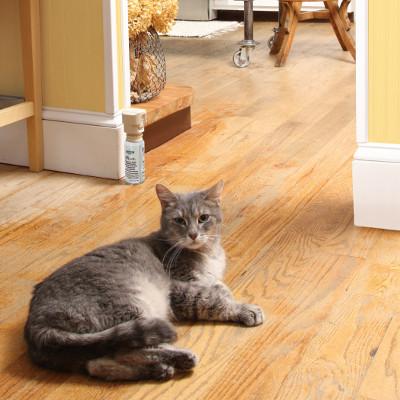
August 14, 2017
PetSafe® Expert
Jim Tedford
How to Set Off-Limits Areas for Pets
It’s Okay to Have Off-Limit Areas

Our homes, pets, and lifestyle preferences are entirely unique. Some people enjoy having their dogs beside them on the couch or keeping them company in the kitchen. Others prefer that pets stay off of the furniture or out of certain rooms in the house. Whatever your lifestyle, pet barriers and deterrents are useful training tools. They establish boundaries for your dog so everyone lives together peacefully.
Common Uses for Barriers & Deterrents
When you use a barrier or deterrent, you are helping a pet understand what is off-limits and what is hers to enjoy. It is one of the most important things you can do for your dog.
Boundaries are often used when dogs are young to establish proper housetraining routines. They can help adult dogs learn to interact with family and visitors in a mannerly fashion or designate off-limit areas in the yard.

Types of Pet Barriers & Deterrents
Barriers and deterrents come in two varieties: manual or remote.
A physical obstacle is an example of a manual barrier. You could place a baby gate in the doorway to keep your dog out of the kitchen.
For an automated solution to the same problem, a remote barrier system emits a tone, spray or static signal that teaches your dog to avoid the kitchen. 3 common options include tone, spray, and static.

- An audible tone or ultrasonic correction is a high-pitched sound much like a traditional dog whistle. The tone is heard by dogs but is inaudible to most humans.
- Spray deterrents release a brisk mist that dogs find unpleasant.
- Static correction is an electrical pulse on the skin that tingles and deters your pet from a behavior. Look for models that have different levels of static correction so you can choose the one that is right for your dog and her temperament.
Some remote devices have a transmitting unit that sends static signals to a receiving collar that your dog wears. Freestanding units sense a pet’s movement with a motion detector and do not require a special collar. Deterrent mats can be placed on the floor in front of doorways or on or near off-limit furniture. When a pet touches or steps on the mat, a static stimulation deters her from proceeding.
If you choose a remote system as your training tool, your dog should be at least 6 months old and able to learn basic obedience commands such as Sit and Stay.
Benefits of Remote Barriers & Deterrents

Whether they are remote or manual, pet barriers and deterrents support healthy learning about boundaries. They can be positioned near anything you want your dog to avoid while giving her freedom to roam in a defined area.
Barriers offer immediate and consistent correction. The advantage of a remote device is that its tone, spray or static signal offers immediate and clear association with a certain behavior (like going into the kitchen) without you needing to be present. Providing this instant association is critical when dogs are learning to stay away from something. Consistent and meaningful information that is timed correctly helps them understand how to avoid receiving the corrective signal again. With remote barriers and deterrents, your pet can learn the clear and concise lesson about the areas in your home to avoid.
These portable devices are easy to set up inside and outside. With remote devices that are designed for indoor use, you can create boundaries for certain rooms of the house, kitchen counters, staircases or other areas. Outdoor remote barriers have weather protection and a broader range. They can be used for flower gardens, swimming pools and other off-limit zones.
Barriers and deterrents help us maintain a positive and loving relationship with our dogs while teaching them what to avoid. These tools can create an environment that is safe for pets. Consider your dog’s age and personality when choosing the type of barrier that best supports her learning.
Get Email Updates
Subscribe to the latest news, promotions, & more from PetSafe® brand.
Sign up today for the latest news, promotions, and more from PetSafe® brand.







